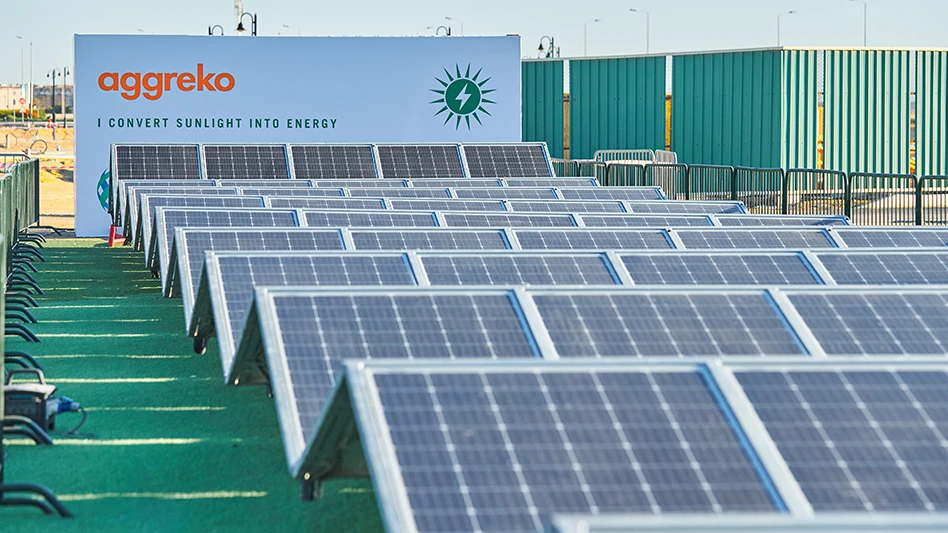
Courtesy of Aggreko
Aggreko’s temporary energy solutions are set to power the upcoming 44th Ryder Cup at Marco Simone Golf & Country Club. The company will introduce energy provided by five solar arrays and the use of battery-energy storage – the first time that both have been used at a Ryder Cup event.
This marks the fifth time that Aggreko and the Ryder Cup have partnered in Europe. The collaboration with the Ryder Cup supports their Green Drive sustainability initiative.
All temporary energy solutions will be supplied by Aggreko in on-course and off-course areas. Multiple facilities will be run on solar power, including the main compound, powered by a 75 kW solar unit. The main cart charging point at the event will be powered by the new 60 kW deployable solar array.
Aggreko also has partnered with Hilton, to provide sustainable energy supply to the exclusive “A Stay on the Green by Hilton” hotel room overlooking the 10th green at the Marco Simone Golf & Country Club. The overnight experience will be powered by a battery unit with 5 kW solar arrays.
“The Ryder Cup is one of the biggest spectacles in sport and we need a reliable power source to make sure we deliver a seamless experience,” Ryder Cup director Richard Atkinson said. “Aggreko are a trusted supplier, and we have worked in close collaboration to make sure that the latest energy efficient technologies are being rolled out across Marco Simone.”
Installation to set the stage in Rome took around six months, with a number of the Aggreko team remaining on the ground to ensure a seamless supply of energy as well as to monitor climate control throughout the Ryder Cup.
“We are proud to continue our long-standing partnership with the Ryder Cup,” said Jono Rose, Aggreko general manager-events services. “Aggreko is committed to delivering reliable and where possible sustainable solutions to large-scale sporting events, helping reduce the Ryder Cup’s carbon footprint while still having a safe temporary energy solutions.”
Latest from Golf Course Industry
- ’Twas the Night Before Christmas (on turf)
- Twas the Night Before Christmas (the turf version audio)
- Advanced Turf Solutions and The Aquatrols Company release soil surfactant
- Heritage Golf Group acquires North Carolina courses
- Editor’s notebook: Green Start Academy 2024
- USGA focuses on inclusion, sustainability in 2024
- Greens with Envy 65: Carolina on our mind
- Five Iron Golf expands into Minnesota





